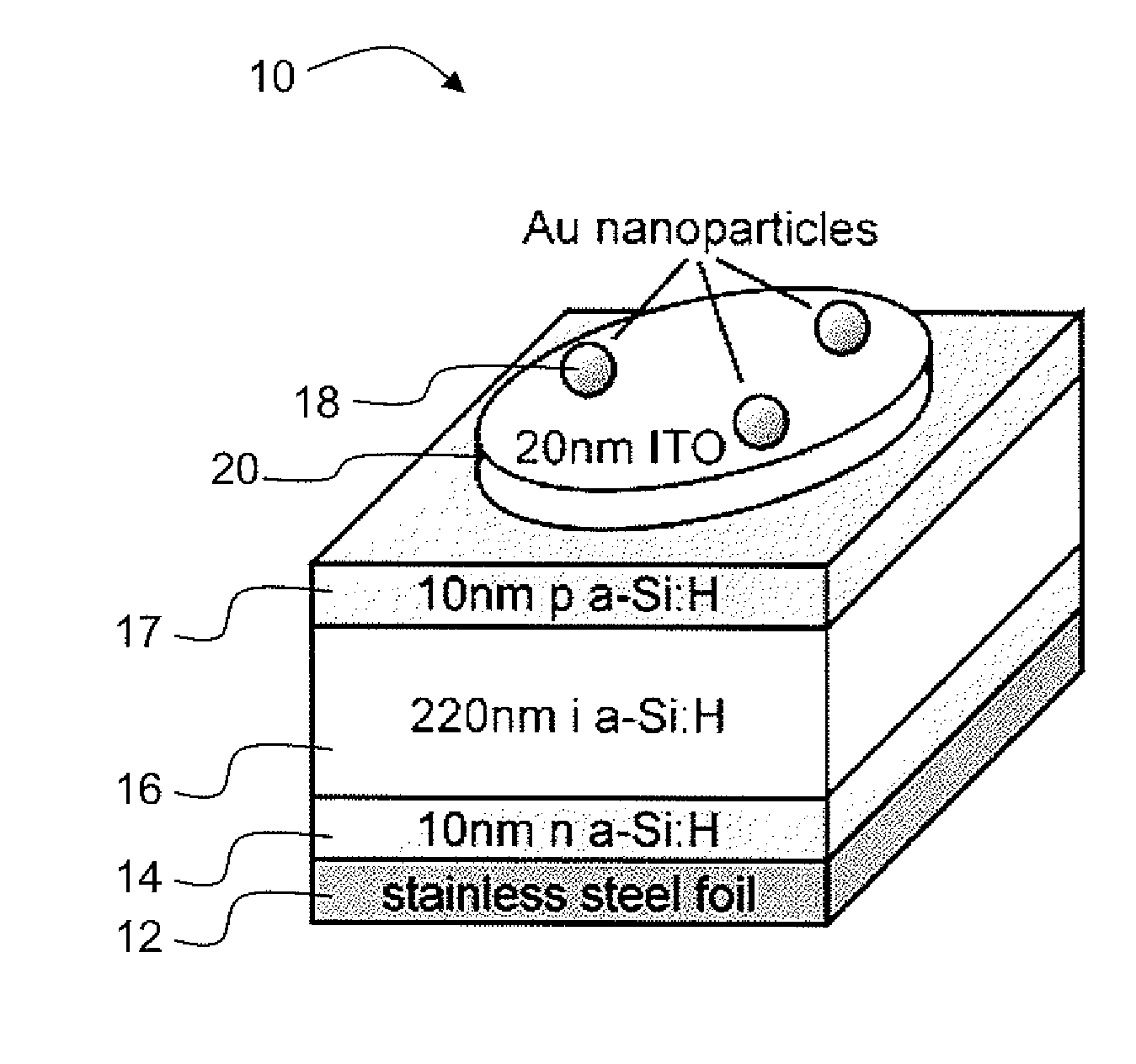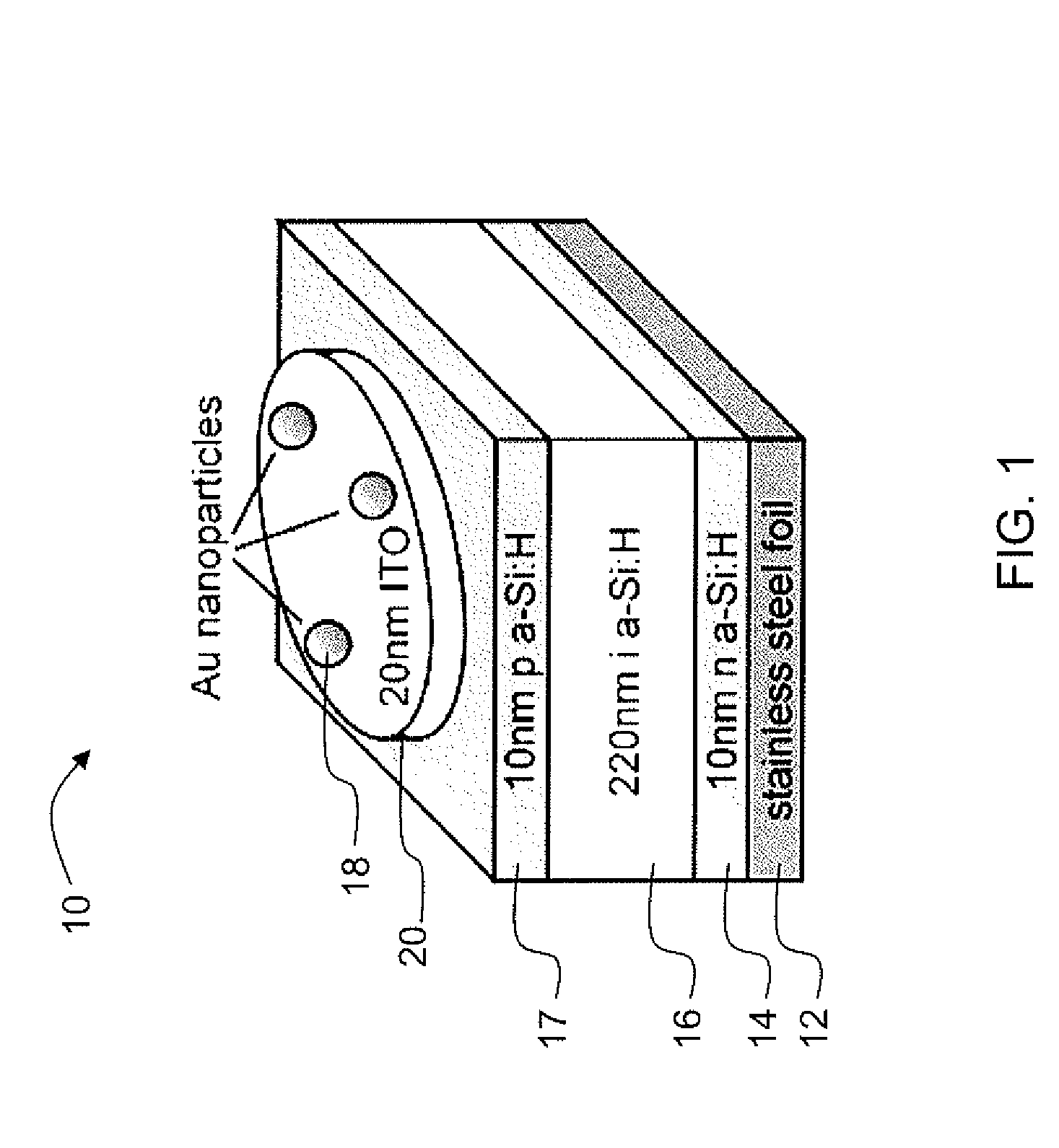Forward scattering nanoparticle enhancement method and photo detector device
- Summary
- Abstract
- Description
- Claims
- Application Information
AI Technical Summary
Benefits of technology
Problems solved by technology
Method used
Image
Examples
Embodiment Construction
[0018]In devices of the invention, forward scattering nanoparticles are sized and arranged with respect to a photo conversion material to forward scatter radiation that would otherwise be reflected away from the photo conversion material. In preferred embodiment devices, a highest percentage of the nanoparticles are sized such that their predominant characteristic is scattering as opposed to absorption. The nanoparticles forward scatter radiation into the photo conversion material that would otherwise be reflected. In preferred embodiments, the nanoparticles are metal nanoparticles, such as gold, silver, copper, or aluminum nanoparticles, and in other embodiments the nanoparticles are dielectric nanoparticles, e.g., silica, sized to predominately forward scatter radiation.
[0019]A particular preferred embodiment device is a photo detector device formed of bulk photo conversion material and having a not shallow pn junction depth. Nanoparticles are sized and arranged to forward scatter...
PUM
 Login to View More
Login to View More Abstract
Description
Claims
Application Information
 Login to View More
Login to View More - R&D
- Intellectual Property
- Life Sciences
- Materials
- Tech Scout
- Unparalleled Data Quality
- Higher Quality Content
- 60% Fewer Hallucinations
Browse by: Latest US Patents, China's latest patents, Technical Efficacy Thesaurus, Application Domain, Technology Topic, Popular Technical Reports.
© 2025 PatSnap. All rights reserved.Legal|Privacy policy|Modern Slavery Act Transparency Statement|Sitemap|About US| Contact US: help@patsnap.com



